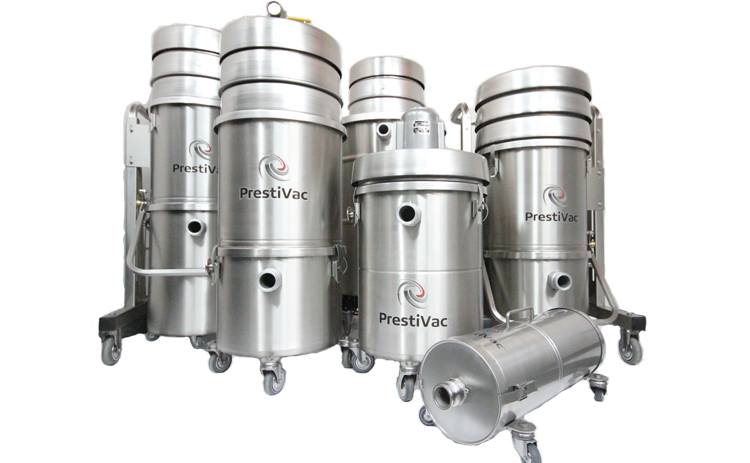What are the applications of Prestivac Industrial Vacuum Cleaners in food plants?
Prestivac’s industrial vacuum cleaners are used in many food processing plants in North America for general plant cleaning, liquid collection, packaging lines, overhead cleaning and process integration without forgetting compliance with OSHA’s combustible dust guidelines.
What are some of the benefits of using an industrial vacuum cleaner for maintenance in a food facility?
Our industrial vacuum cleaners are fitted with overhead cleaning kits for cleaning the hard to reach areas such as the vents, on top of machinery and reaching pipes.
Corrosion resistant and stainless steel vacuums that allow quick decontamination for the removal of all food residue.
Anti-static and explosion proof to protect the workers and facility.
Why are industrial vacuum cleaners better than compressed air, cheap mops, and brooms?
The old cleaning methods such as cleaning with a broom, a mop or compressed air are risky and put the workers and the manufacturing plant in danger of an explosion. When you mop, broom or use compressed air, the dust is dispersed into the air and this causes contamination by spreading bacteria all over the facility.
Cleaning with an industrial vacuum cleaner saves time and thousands of dollars.
What is the right step to take when faced with an OSHA combustible dust fine?
Keeping your food manufacturing and processing plant free of explosive dust is not that easy. You should avoid the traditional cleaning methods because they worsen the dust situation by spreading it and making it airborne.
This is the reason you should use an industrial vacuum cleaner. A certified vacuum cleaner is the only way to fight combustible dust and other explosive agents.
How do I know if a vacuum is certified?
It’s easy to detect an explosion-proof vacuum. The exterior and interior of an explosion proof vacuum cleaner are grounded and created with non-sparking stainless steel. The manufacturer of the vacuum also holds certificates for compliance and use in an NFPA-classified environment.













